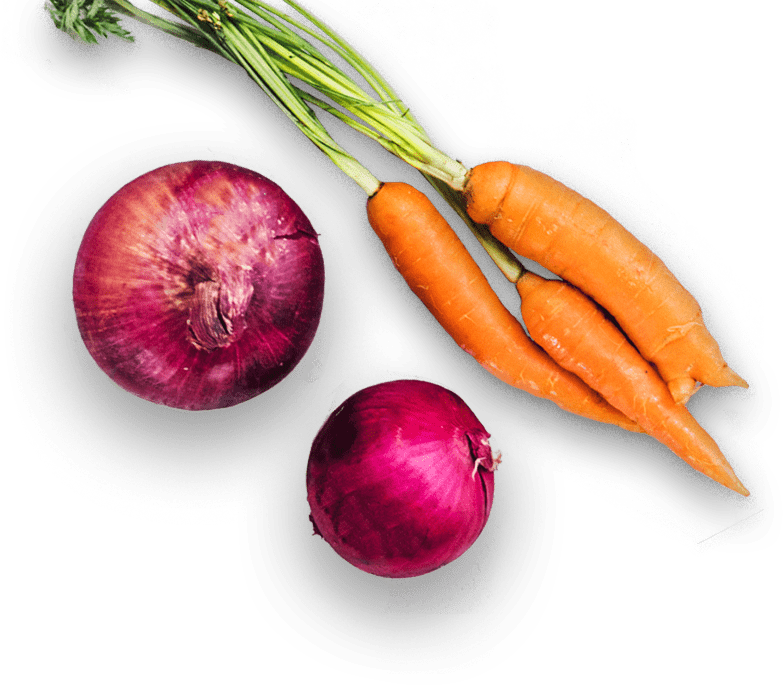
Dr. Murray’s Top 7 Superfoods
Introduction
In order to provide some framework for discussion, my definition of a superfood is one that provides exceptional health benefits. Obviously, virtually any food, herb, or spice has the potential to be a superfood. But, most often a superfoods list focuses on berries; exotic superfruits like acai, goji, noni, and others; kale and other dark green vegetables; fatty fish such as salmon, mackerel and sardines; many legumes (peanuts, lentils, beans) and whole grains. While I agree with these sorts of foods being worthy on any superfood list, my list is different because my general diet recommendations already focus on so many superfoods.
I Love Flavonoids
One of the keys to eating a diet that promotes health and longevity is focusing on flavonoids, a type of plant pigment and a member of the larger polyphenol family. As a class of compounds, flavonoids are often called “nature’s biological response modifiers” because of their anti-inflammatory, antiallergic, antiviral, and anticancer properties.
Many superfoods owe their benefits to their flavonoid content. While different flavonoids have different effects in the body, the key factor may not be a high intake of any one particular flavonoid, but rather a high total flavonoid intake that also provides a high variety of flavonoids rather than any one particular flavonoid class. There are over 8,000 different types of flavonoids out there in nature.
Food vs. Supplements
What the research shows is that it does not seem to matter whether the flavonoids come from dietary sources or through supplements containing flavonoid-rich extracts. The caveat is that the dosage must be sufficient, and the total intake must come from a variety of sources. So, with this caveat of the importance of proanthocyanidins in mind, what is an effective dosage of flavonoids?
Based upon my interpretation of all of this data, I believe that the total flavonoid intake for general health should be at least 500 mg from a wide variety of sources. My flavonoid intake is exceptionally high because of my dietary and supplementation strategy. For many years I have consciously sought to achieve a minimum of 2,000 mg daily and usually go well beyond this total on most days. Here is a list of the foods and supplements that I consume daily to reach this goal:

Table 1—Dr. Murray’s Daily Flavonoid Intake
|
Dietary sources: |
Daily dosage |
Flavonoid content |
|
Berries |
1 cup |
205 mg |
|
Raw cacao powder |
3 tablespoons |
85 mg |
|
Tea (green or herbal) |
12 ounces |
400 mg |
|
Decaffeinated coffee |
12 ounces |
400 mg |
|
Nuts |
1/2 cup |
85 mg |
|
General diet not included above |
– |
150 mg |
|
Supplement sources: |
||
|
600 mg |
600 mg |
|
|
500 mg |
500 mg |
|
|
Cacao flavanols |
375 mg |
375 mg |
|
Green Tea Phytosome® |
300 mg |
100 mg |
|
300 mg |
300 mg |
|
|
500 mg |
500 mg |
*from VeinSense (Natural Factors)


How to Calculate Your Flavonoid Intake
You can use a table of the approximate flavonoid content of selected foods derived from multiple sources, but primarily the USDA Database for the Flavonoid Content of Selected Foods, Release 3.1 (December 2013). Results vary considerably based upon numerous factors, including the water content of the selected source, analytical method, exact species or type of the selected food, and other factors. In general, smaller more dense fruit will provide a higher content of flavonoids than larger, more woody fruit. For example, a smaller, denser blueberry or apple will have a higher content of flavonoids than a larger, higher water content blueberry or apple. The key is to try to hit that 500 mg per day target and remember these foods have numerous other beneficial compounds in them besides flavonoids.
Table 2—Approximate Flavonoid Content of Selected Foods in Milligrams (mg) per 3½ oz (100 g) Serving*
| Foods | Flavanols | Anthocyanins |
4‑Oxo‑ flavonoids |
Total |
| Fruits | ||||
| Apples | 30 | 15 | 15 | 60 |
| Apricots | 25 | – | 15 | 40 |
| Black berries | 15 | 350 | 2 | 367 |
| Blueberries | 15 | 190 | 5 | 205 |
| Cherries, sweet | 40 | 75 | 5 | 120 |
| Cranberries | 20 | 150 | 50 | 275 |
| Currants, black | 15 | 200 | 150 | 415 |
| Grapefruit | – | – | 50 | 50 |
| Grapes, black | 4 | 125 | 20 | 149 |
| Grapes, green | 10 | – | 4 | 14 |
| Grapes, red | 4 | 80 | 3 | 87 |
| Lemons, without peel | – | – | 83 | 83 |
| Oranges, all commercial types | – | – | 101 | 101 |
| Peaches | 21 | 7 | 2 | 30 |
| Pears | 27 | 4 | 4 | 20 |
| Plums, black | 140 | 54 | 40 | 234 |
| Raspberries | 20 | 135 | 10 | 165 |
| Strawberries | 12 | 75 | 9 | 96 |
| Vegetables | ||||
| Cabbage, red (raw) | – | 210 | 3 | 213 |
| Kale, raw | – | – | 135 | 135 |
| Onions, red (raw) | – | 53 | 235 | 288 |
| Parsley | – | – | 330 | 330 |
| Radishes, raw | – | 100 | 2 | 102 |
| Nuts and Seeds | ||||
| Almonds | 7 | 4 | 10 | 21 |
| Chia seeds | – | – | 34 | 34 |
| Hazelnuts | 12 | 11 | – | 23 |
| Pecans | 25 | 25 | – | 50 |
| Miscellaneous | ||||
| Cacao powder | 8,500 | – | – | 8,500 |
| Cocoa powder, unsweetened | 378 | – | – | 378 |
| Chocolate, dark semisweet | 65 | – | – | 65 |
| Tea, black brewed | 119 | – | 4 | 123 |
| Tea, green brewed | 128 | – | 5 | 133 |
| Wine, red | 125 | 80 | 3 | 208 |
*Flavanols include catechins and proanthocyanins; 4‑Oxo‑flavonoids include flavanones, flavones, and flavonols (including quercetin).
My Top Seven Superfoods
Before getting to my superfoods list, I like to say that when it comes to superfoods, Americans suffer from xenophilia. Let’s examine the meaning of this term. “Xeno” means foreign and “philia” means love. So, what I am referring to is my feeling that we tend to think of exotic, foreign-sounding fruits and vegetables as being much more of a superfood than the wondrous common fruits and vegetables that are very accessible to us. For example, in the past decade or so various “superfruits” have dominated new product introductions in health food stores. However, I am not sure that the health benefits provided by “exotic” superfruits are significantly greater than those provided by familiar fruits.
Table 3—Superfruits: Familiar vs. Exotic
| Familiar | Exotic |
| Apples | Acai |
| Black currant | Baobab |
| Blueberry | Camu Camu |
| Cranberry | Goji |
| Grape | Mangosteen |
| Strawberry | Maqui |
| Pomegranate | Noni |
There is also little doubt that many common fruits, vegetables, legumes, nuts, seeds, spices, herbs, and other foods are worthy of superfood status. That said, there are seven superfoods that I try to ingest on a daily basis because of their exceptional health properties:
- Berries
- Raw Cacao Powder and Dark Chocolate
- Green tea
- Bee pollen
- Ground flaxseeds
- Whey protein
- PGX
The last item, PGX, is a revolutionary dietary fiber matrix that is backed by over 15 years of research and development. Detailed clinical studies have shown PGX to exert the following benefits:
- Reduces appetite and promotes effective weight loss
- Stabilizes blood sugar control
- Increases insulin sensitivity
- Reduces the glycemic index of any food, beverage, or meal by 35–50%
- Lowers blood cholesterol and triglycerides
PGX is available in a variety of different forms, including granules, capsules, and part of drink mixes for satiety or meal replacement.



Final Comments
I am passionate about these seven superfoods and definitely make them a big focus in my daily routine. But they are not the only “superfoods” that I consume. In fact, I think my whole diet is focused on health promoting foods. You can do the same and enjoy better health, higher energy levels, and greater clarity of thought.
For More Information
If you have not ordered my latest book, The Longevity Matrix, click on the link. The information above is an example of the type of practical information that you will find in The Longevity Matrix.

